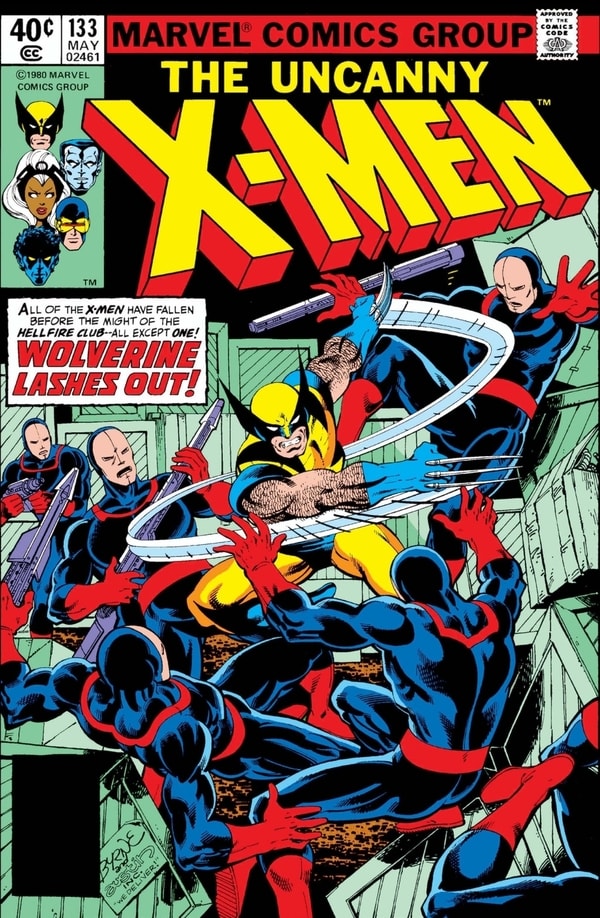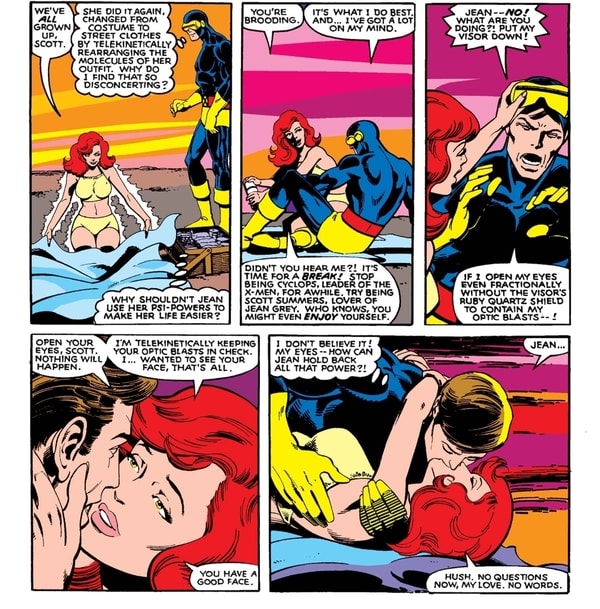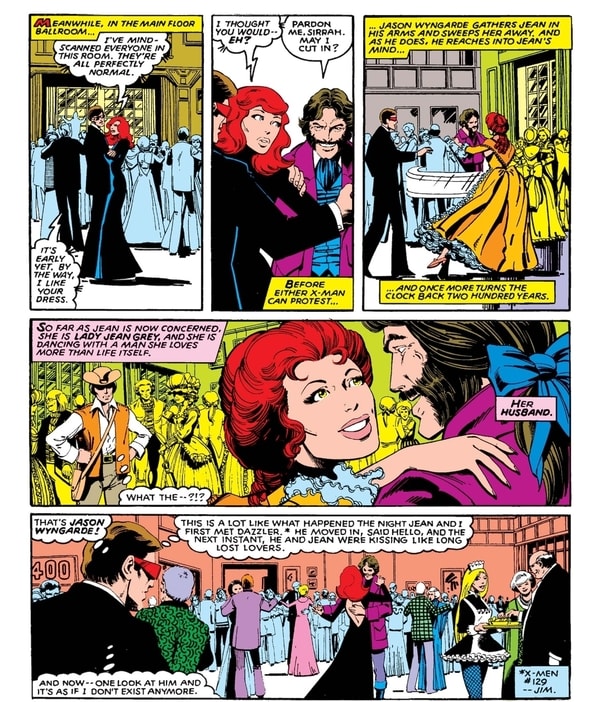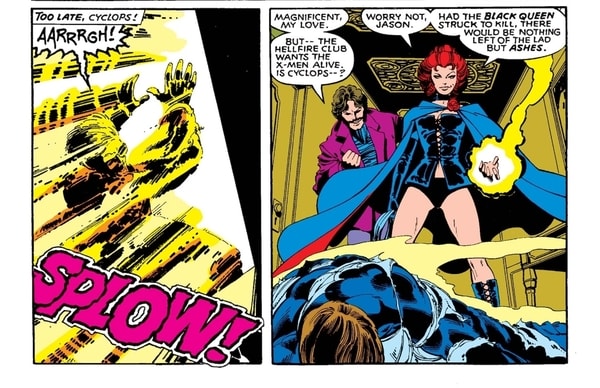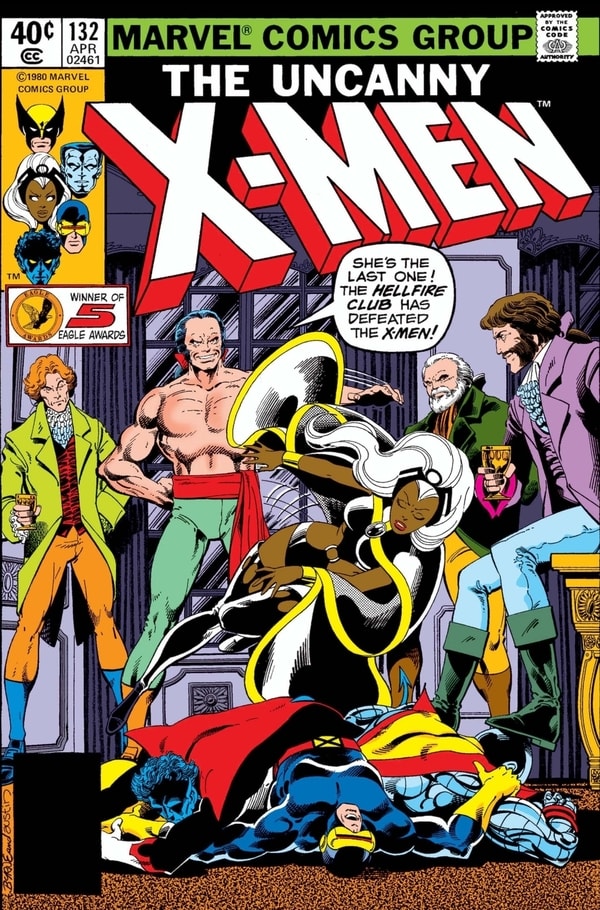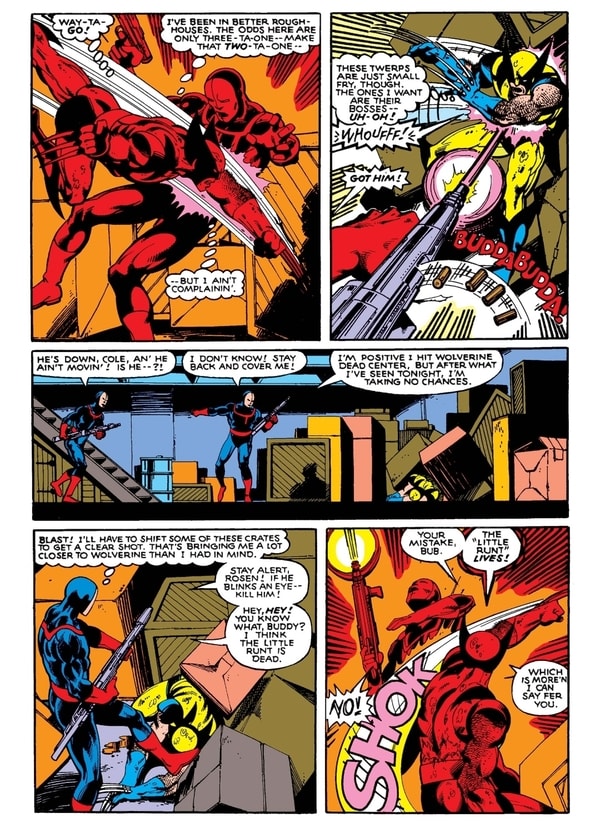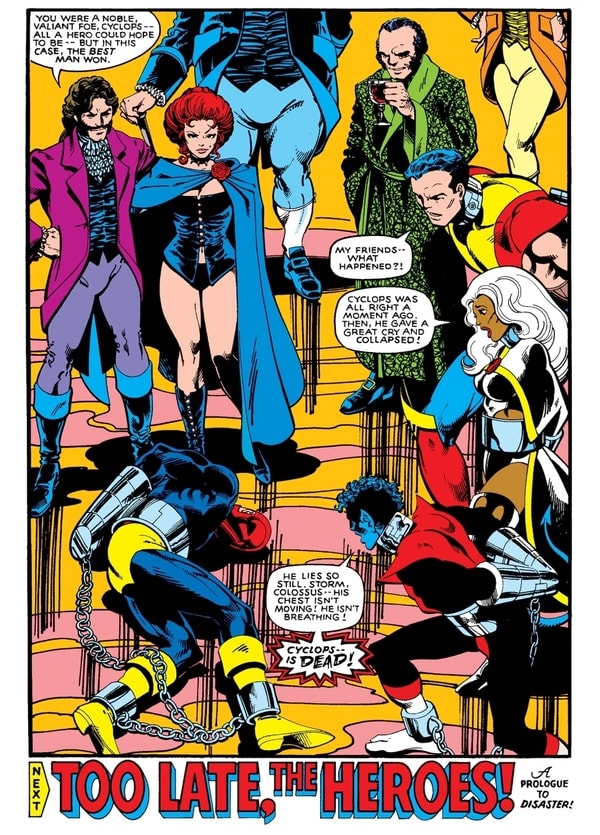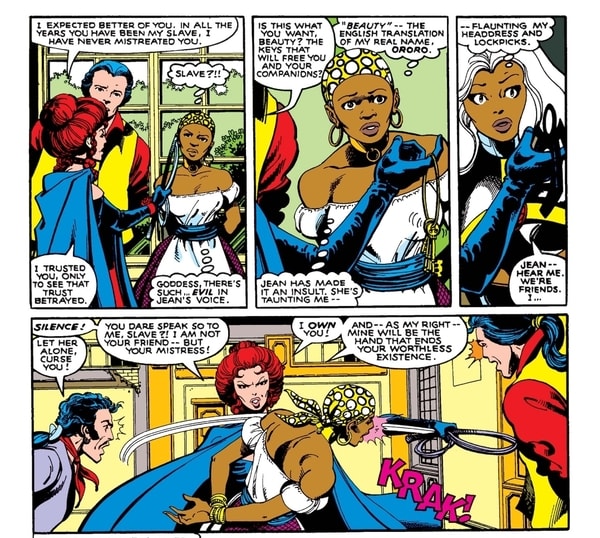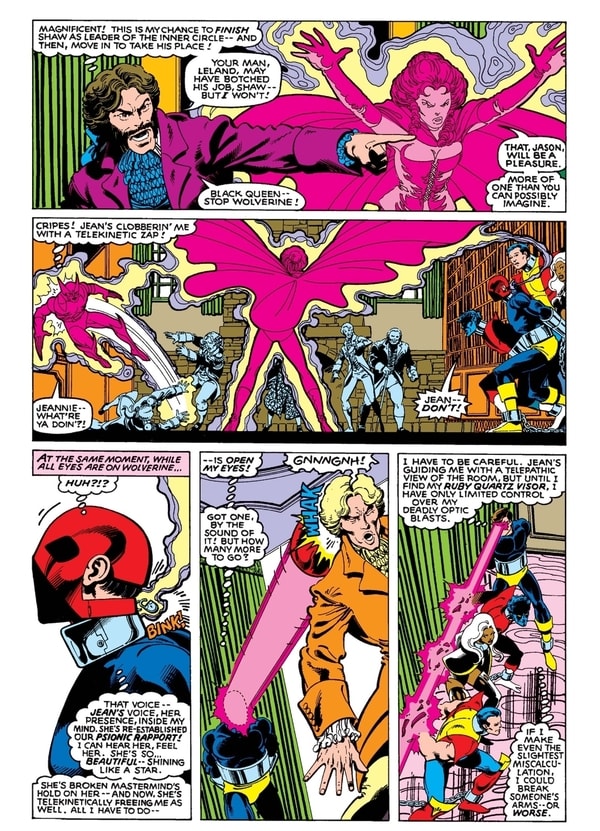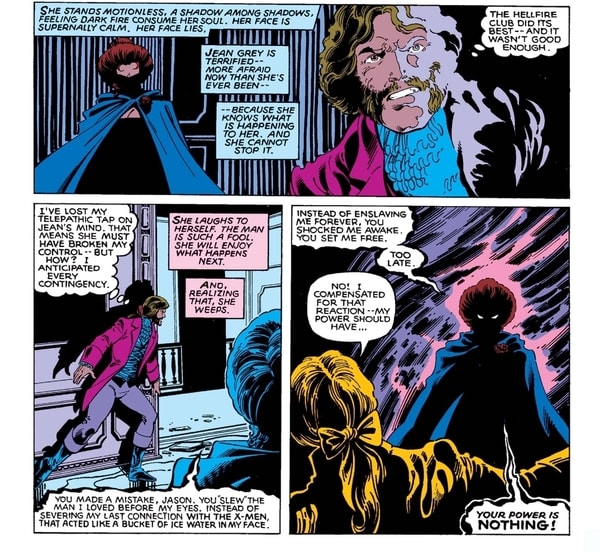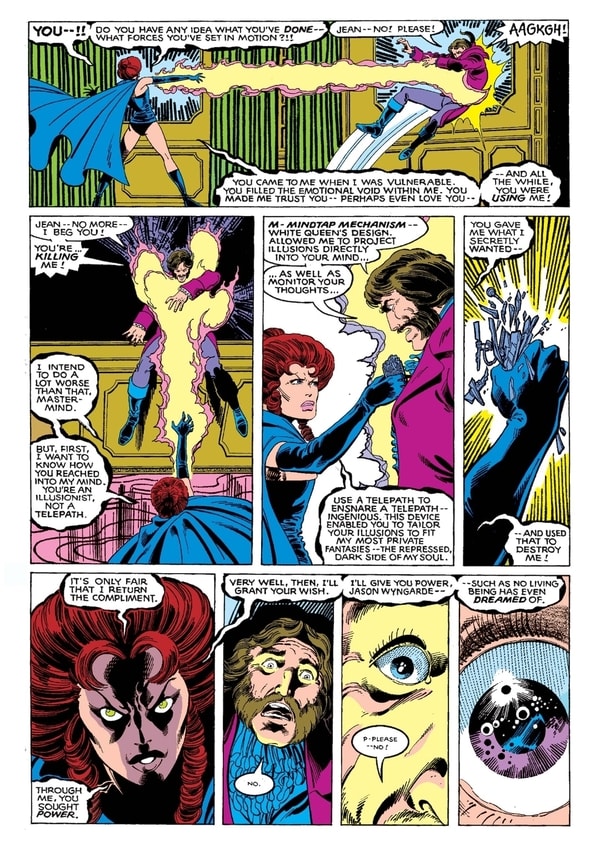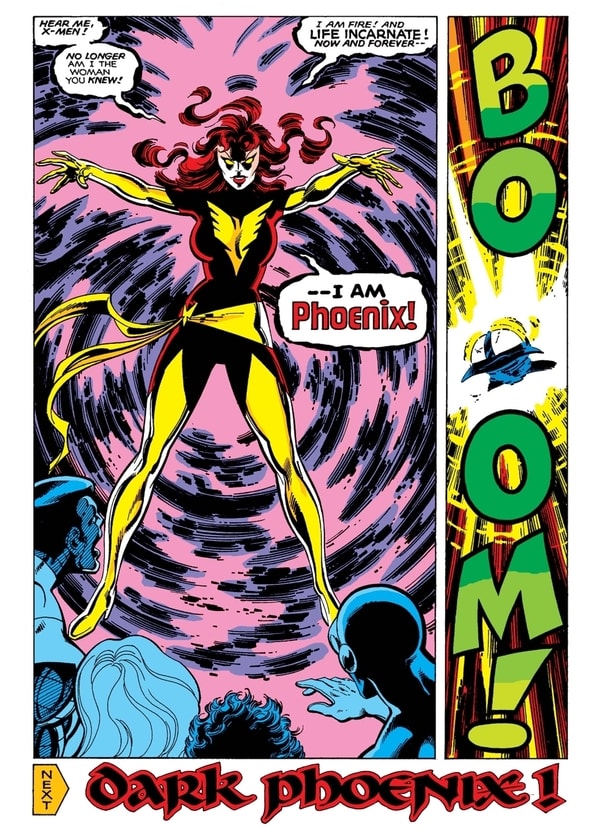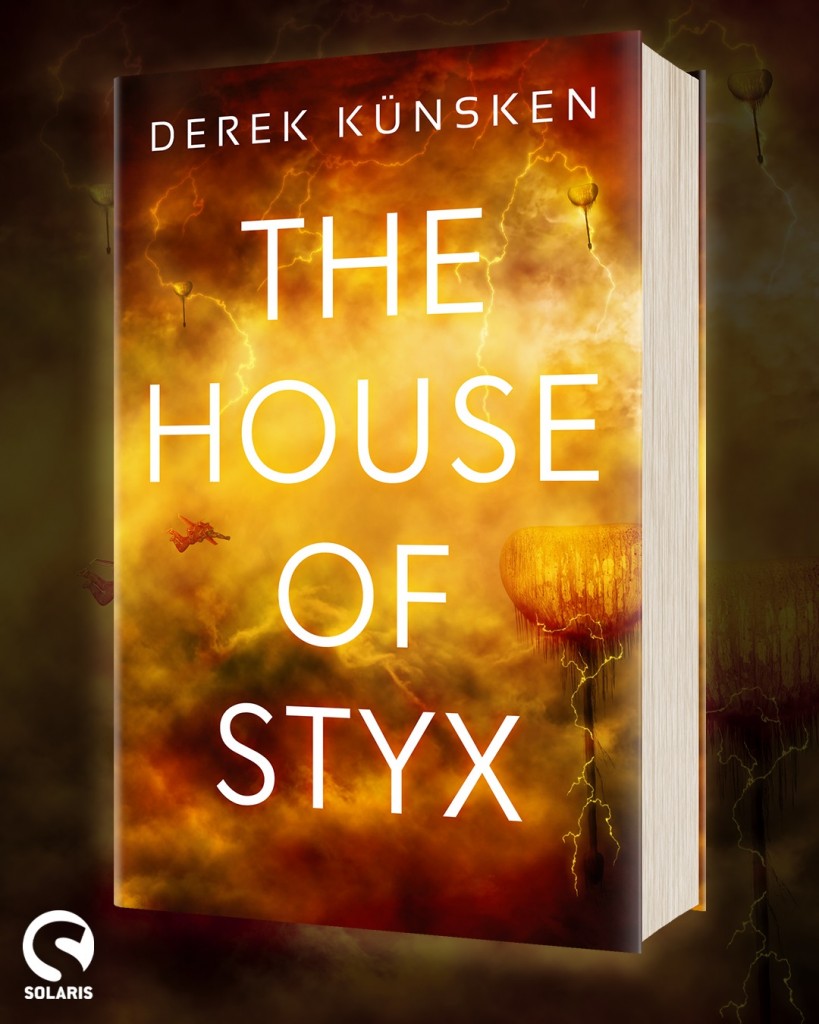Uncanny X-Men, Part 27: Act II of the Dark Phoenix Saga
1979’s Uncanny X-Men #129-131 began the legendary Dark Phoenix Saga, which runs to issue #137. In those first three issues, we saw far more clearly the hooks that Jason Wyngarde got into Jean Grey, the Phoenix, and we saw more dramatically how Phoenix had been changing. She’d become more violent, sensual, tempted by emotions and desires she’d suppressed all her life. In the fictitious dream world that Wyngarde had been constructing in Jean’s mind, as a means to control her for the Hellfire Club, he’d been giving her unlimited power in a setting without moral restraint. Today I’m diving into the year 1980, with issues #132 – #134: the middle of the Dark Phoenix Saga and the progression of the corruption of Phoenix by the Hellfire Club.
The Hellfire Cub knows more about the X-Men than Scott would like, so he takes the X-Men off the grid, to New Mexico, at the hideaway of Warren Worthington, the Angel.
Phoenix again is acting differently from how she’d been as Marvel Girl. She shares a kiss with Warren just for fun and flaunts her powers around Scott, first rearranging the molecules of her clothes and next taking off his visor and holding back his uncontrollable optic blasts so that they can be intimate like a normal couple for a bit.
And after a time, the X-Men go to meet the Hellfire Club on its own ground, with a plan worthy of Ocean’s Eleven. And it is here that we finally meet the rest of the Hellfire Club. Emma Frost, the White Queen, of course apparently died in the last issue, and Jason Wyngarde is hoping to become a member (Phoenix is his entry fee). But Sebastien Shaw (energy-absorbing mutant), Harry Leland (gravity-controlling mutant) and Donald Pierce (cyborg) are the other members of the inner circle. And they know the X-Men are trying to infiltrate.
Wyngarde swoops in looking like a regular guy and Jean leaves with him, forgetting Scott, as she slips happily into the mental illusion of a rich, married, land-owning lady of the 18th century. And as Wyngarde walks her unresistingly away, he drops his own illusion, so Scott can recognize him as one of the X-Men’s oldest foes: Mastermind. He chases, and it is Phoenix, as the Black Queen of the Hellfire Club who strikes him down.
Marvel has a lot of hero-on-hero violence, but there is something disturbingly different about Phoenix in black leather and a spiked collar standing over Scott’s smoking, unconscious body. This isn’t a sudden Enchantress mind controlling Namor for one issue for one task. Claremont and team have been playing Jean’s moral descent since 1976. For four years, they’ve been showing the growing pleasure she takes in having and using this Silver Surfer-level power. They’ve shown the very slow temptation and seduction of Phoenix’ moral compass, her new appreciation of darker pleasures and tastes. So for those of us who’ve been reading along, there is something earned and different about this moment.
The other X-Men come running, but are taken out by the Hellfire Club with terrible ease. Only Wolverine isn’t caught, because he’s dropped into a flooded, rushing storm drain while he weighs a couple thousand pounds.
Issue #133 is a hoot. It’s appropriately titled “Wolverine: Alone” because he’s the only one who’s still free, and other than issue #116 (when he and Nightcrawler and Storm had to rescue their friends in the Savage Land), this is the only issue where he’s really calling the shots. And I can really see why he became the most popular X-man, about which I have complex thoughts. It is fun to watch this killing machine execute justice on these baddies though…
But the real stakes of the issue are not with Wolverine, or even the captive X-Men. It’s firmly with Phoenix as the Hellfire Club’s Black Queen. Her attitude becomes much darker, crueler, and in the timeslip, she’s the owner of Ororo (whom she sees as her legal slave) with the implications of life and death and terror that entails. In Phoenix as Black Queen, sensuality, sexuality, unequal power dynamics and the very personal cruelty of a friend-become-enemy are all jumbled into the character of this new villain.
Worse, Moira McTaggert on Muir Island has finished her analysis of her data on Jean and draws ominous conclusions: “As Phoenix, Jean realized her full potential as a psi. She possessed the power of a god, but only the experience and awareness of a young woman.” “To protect itself from itself, her mind engaged a series of psychic circuit breakers that cut her power back to a level she could handle. Someone, or something, has been releasing those breakers. There are almost none left. Jean is once more tapping near-infinite power levels.”
Mastermind and Scott have a psychic duel within Phoenix’s mind, and Scott is stabbed through the heart, the blow Wyngarde wants and needs to finally break Phoenix from her old life.
But it has the opposite effect. When Wolverine bursts in, Phoenix uses the distraction to free Cyclops. And as we all know, Cyclops only needs his opponents to make a single mistake to turn the the tables on them. The X-Men, now ready, take apart the Hellfire Club.
On her own, while no one is looking, Phoenix prepares her revenge on Mastermind, knowing full well that she’s sliding into a fate she doesn’t know how to avoid, one that will enjoy the revenge she’s about to exact.
She was used, betrayed, twisted. Mastermind tailored his mental illusions to cater to her most private fantasies, the repressed dark side. He taught her to be cruel and she shows him what she’s learned.
The X-Men escape, but in the end, Jean cannot. And in an eerie call-back to the birth of Phoenix in issue #101, we get the same dialogue as Dark Phoenix is born.
This middle third of the Dark Phoenix saga is brillant comics, and has been rightly elevated as one of comics finest stories. We have lots of stories of redemption, of villains becoming heroes. Scarlet Witch, Hawkeye, Quicksilver, Magneto – the list goes on. The reverse, the descent from angel to devil, is far rarer and is hard to do authentically. Claremont, Cockrum and Byrne took Jean Grey, Marvel Girl, and in thirty-four issues, turned her into Dark Phoenix, one of the most iconic and narratively powerful villains ever.
I began read these stories in out-of-order patches that took me from age 11 to age 14 to collect to the whole story. Reading them almost 40 years later, as a writer and creator myself, I can appreciate the craft and the patience and the discipline Claremont had to do this story right. Some layers of the story, like the very overt sexual power dynamics, I obviously couldn’t understand as a tween or teen, and the exact nature of Jean’s role in her own corruption is still left for each reader to interpret. There are very few comics, especially in the Bronze Age, with that level of moral and personal ambiguity, and is well worth rereading.
And of course, the full thematic impacts won’t be appreciated until the last act of this saga, and in this Claremont and Byrne will be working heavily with their editors in developing their final authorial position. We’ll talk about that in my next post.
See you in two weeks!
If you want to catch up on any of my other posts about the X-Men:
- Part I: Introducing The Strangest Super-Team of All: Uncanny X-Men #1 (Nov 1963) to #20 (May 1966)
- Part II: Early Guest Appearances (1964-65), Uncanny X-Men #21-23 (1966), and X-Men: First Class Volume I (2006)
- Part III: X-Men: First Class, Volume II (2007) and First Class Finals
- Part IV: Uncanny X-Men #24-39: The Middle Years of the Original Team
- Part V: Uncanny X-Men #40-48: Death and Separation
- Part VI: Uncanny X-Men #49-53: Reunion and Family and Steranko
- Part VII: Uncanny X-Men #54-58 — Havok and Neal Adams
- Part VIII: Uncanny X-Men #59-66: The Savage Land and the End of the Silver Age X-Men
- Part IX: Filling in the Corners of the Original X-Men with Savage Hulk #1-4
- Part X: John Byrne’s The Hidden Years #1-4
- Part XI: Storm, the FF and Phoenix in John Byrne’s The Hidden Years
- Part XII: X-Men Guest Appearances in 1971-1972 and Hank gets Furry!
- Part XIII: Englehart’s Bronze Age Monster Horror – The Beast
- Part XIV: 1973 and 1974 – Magneto, the Hulk, Banshee and post-Watergate Captain America
- Part XV: 1974 and 1975 – The Last Tales of the Original X-Men
- Part XVI: Enter Wein, Claremont and Cockrum in 1975
- Part XVII: 1976 — Sentinels in Space and the Rise of Phoenix
- Part XVIII: Juggernaut and Magneto — For the Very First Time
- Part XIX: Phoenix, Firelord and the Imperial Guard
- Part XX: Iron Fist, Blame Canada and Some Strike-Outs
- Part XXI: Epic Magneto Triumph and more X-Men Death!
- Part XXII: 1978 — The Savage Land, Japan and Psionic Throwback Thursday!
- Part XXIII: 1979 — Chaos in Canada with Alpha Flight!
- Part XXIV: Arcade, Murderworld and their First King-Sized Annual
- Part XXV: The Proteus Saga!
- Part XXVI: Introducing Kitty Pryde, Emma Frost and Launching the Dark Phoenix Saga
Derek Künsken writes science fiction in Gatineau, Québec. His first novel, The Quantum Magician, a space opera heist, was a finalist for the Locus, Aurora and Chinese Nebula awards. Its sequel, The Quantum Garden was an Aurora finalist as well. His third novel, The House of Styx, got a starred review in Publishers’ Weekly and the Library Journal and is out in audio and ebook (order link); and the hardcover will release in May, 2021.
